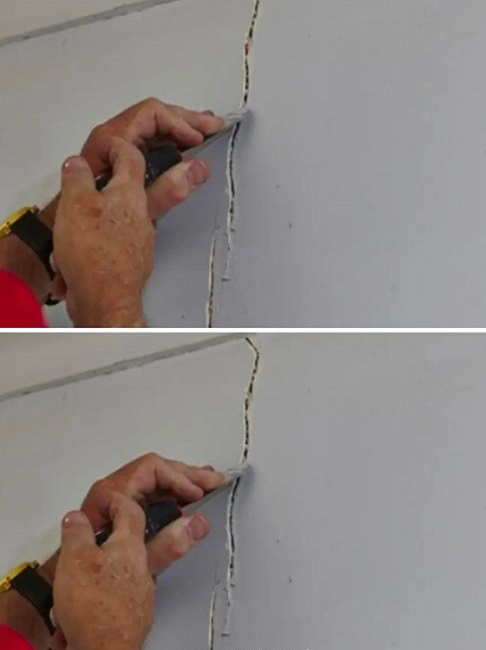When you want to proceed with the treatment of cracks, you have to look at the particularities of the latter. And for good reason, depending on whether they are on the outside or inside, visible cracks will need different repairs. It is also necessary to take into account the size of these holes but also their depth. These elements have an impact on the filling and renovation needed to smooth the wall.
How do you know that the wall has dangerous cracks?
As explained above, to fill these holes that may be due to water infiltration, several particularities such as size or depth must be taken into account. It is also important to understand the severity of this hole in the wall because there are several types of cracks. Micro-cracks are superficial and measure less than 0.2 millimetres wide. While they may be harmless, it is important to monitor them if they have appeared recently. The second category is small cracks that are between 0.2 and 2 millimetres wide. Care should be taken with the latter because they may be caused by inherent damage to the house. The size of cracks, also called crevices, is larger than 2 millimetres and is symptomatic of a structural problem such as a construction or foundation failure. And for good reason, this hole can deteriorate the strength of a roof or wall.
Keeping an eye out for cracks in walls is critical.
Covering a cracked wall should precede an assessment of the danger of the hole. Hiding the latter is not enough because repairing it without analysing the underlying reasons is a ticking time bomb. And for good reason, even small visible cracks can be the result of a serious cause, even if they are repaired. When these exceed 0.2 millimetres, they have the potential to become cracks. In this case, it will be necessary to anticipate this by seeking advice and repairs from a building professional. And for good reason, these large cracks can lead to the collapse of the substrate. Sometimes it is mould that damages them. Fortunately, it is possible to get rid of it with various techniques.
How are cracks in ceilings and walls assessed?
During a specialist’s intervention, he starts by analysing the severity of the cracks in the ceiling or wall. He will use tools such as a plaster mount to measure the depth of the hole. He can also analyse the latter with a graduated crack gauge to measure the width of this crack. The building professional can also use a sample cup for the same purpose. It is thanks to these devices that the expert will be able to know whether repair work will be required.
How to fill a plaster wall?
Generally, walls with this material are located inside the house. The cracks that can damage them are usually superficial. Fortunately, cracking can be stopped with DIY skills and the right tools. You will need a paintbrush, a scraper, a putty knife, sandpaper and a putty cartridge. The first step is to widen the hole with the scraper. Then use the brush to clean out the plaster residue and sand the sides with the inside of the crack. It is now time to use the putty to fill the latter and wait for it to dry. Use sandpaper to smooth the wall or ceiling. For a more aesthetic appearance, it should be repainted in white or in the colour of your choice. Magic, isn’t it?
My wall is concrete: how do I fix it?
Continue Reading in next page

